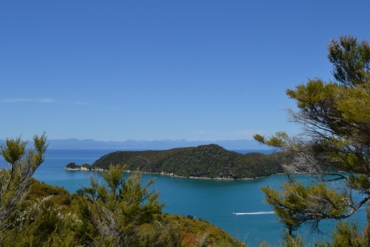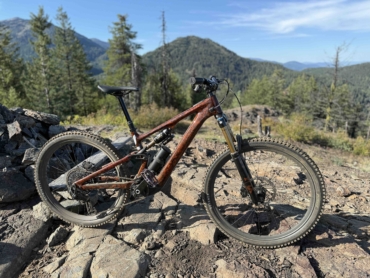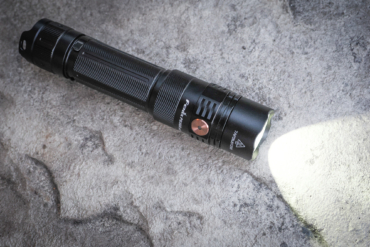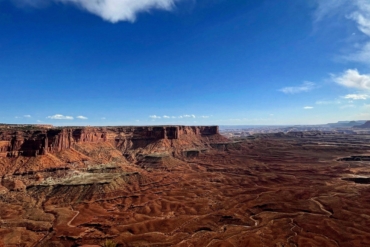Adventure racing is a true multisport pursuit that requires a wide skillset of outdoor disciplines. In this article, we look at tips and techniques from the USARA for the two most common disciplines in the sport: biking and trekking.
Editor’s note: This article was originally published on USARA.com and has been modified for GearJunkie.
Each adventure race is different and can include disciplines including paddling, running, road and mountain biking, and climbing. They sometimes even include esoteric “bonus” activities like caving or group challenges where you’re tested physically or mentally on the spot.
Once you learn to navigate, arguably, the two most important disciplines are based on foot (trekking, trail running, bushwhacking) and bike (road, trail, or singletrack). Runners have to be prepared to leave paths altogether and head overland, often bushwhacking across technical terrain. Bikers need to be comfortable riding all kinds of roads and trails.
Here, we offer some context and a few tips as you prepare to train for the foot and bike sections of ARs to come.

Time to Trek!
Efficient foot travel in adventure racing is extremely important, and we believe people sometimes take this “skill” for granted, especially in longer events. How hard can running, jogging, or even walking be?
Anyone who has participated in a multiday race knows that more experienced, efficient, and skilled teams can open up massive leads on a foot section. Being able to move efficiently through technical terrain requires both skill and art. And just piling up the miles on a treadmill or your local trails won’t necessarily translate to an adventure racing course.
Overview
What should you do to better prepare for the unique challenges of adventure racing foot travel?
First off, spend time on your feet. Toughen them up. In most adventure races, your feet will get wet, and even if you don’t cover massive mileage, you’ll spend a fair bit of the race on your feet. Make sure they are ready for it. Running, hiking, walking — everything counts. Remember, though, that longer sessions are important to help your feet get ready.
While many adventure racers train by running, make sure you mix in some hiking as well; trekking is sometimes all the terrain will allow for. We’ve seen plenty of savvy teams finish races successfully without ever moving faster than a steady walk.
Add a pack to your runs or hikes and practice carrying weight. Doing so will also improve your leg and core strength.
On that note, try to squeeze in some core and upper body strength. Running fast on a local trail is great for speed, but AR isn’t a trail race. You need to carry weight, you won’t be moving as fast, and you need your core to be ready for this extra work.
Unique Challenges of Adventure Race Trekking
There are many obstacles in adventure racing that aren’t present in most other types of races. Here’s how to navigate them.
Hills
Get your hills in. Unless you are racing in the flatlands, expect hills. Lots of them. You don’t necessarily have to run the hills when preparing; hiking them will do the trick as well. And don’t neglect training for descents too. Giving your quads a good pounding on a training run will pay dividends on the racecourse by building strength and holding off fatigue.
Bushwhacking
Being comfortable moving quickly overland will pay off. No one needs to go train in a thorn bush or a thicket of mountain laurel, but you’ll encounter these obstacles with frequency in adventure races. And the more comfortable you are with off-trail travel, the more efficient you and your teammates will be. Practice identifying old trail beds or animal trails that allow for faster travel when off established trails.
Rocks
When you leave trails, you’re bound to find rocks. Be prepared for technical terrain. Find a local boulder field. Don’t shy away from rockier trails. Practice hiking or even running on uneven terrain to help improve your dexterity, strength, and speed.
Speed
Don’t forgo speed training, especially if you are focusing on sprint races. But remember that adventure races are endurance events, and often ultraendurance in nature. Make sure you get in some long training sessions on foot. Get in some extra hills and try to do at least some of your training off the pavement or treadmill.
For those starting out with beginner-friendly races, you can expect approximately 5-10 miles of foot travel in a sprint race and roughly 10-20 in a half-day race. The mileage increases with 24-hour races and longer. But remember that the mileage may be broken up into multiple stages.
You don’t need to be trained to run a steady marathon to finish an adventure race, even a daylong one. If you can run 5-10 miles at a pop without killing yourself, you probably have enough of a base to at least finish beginner-friendly races. You might not be competitive, and it might hurt more, but you can finish!

Get on the Bike
In adventure racing, you will need to be prepared for all sorts of riding. Even in a shorter race, you will likely encounter different flavors of biking.
Yes, the section may be called “mountain biking,” but AR riding can and does involve a ton of variety. There can be paved surfaces, dirt roads, old jeep tracks, and singletrack trails, including smooth, groomed trails and gnarly technical ones. Some races even have sections where one simply dreams about riding the bike they’re hauling on a shoulder, shoving from behind, or throwing into a ditch. In short, be prepared for anything and everything!
Training Considerations
Most importantly, all biking counts. Road riding, singletrack, indoor trainers — they all do the trick in helping you build endurance on the bike. As is true for all AR disciplines, make sure you spend quality time in the saddle. Build up your sit bones and try to sneak in a long ride or two each week.
Hills
As with foot sections of ARs, get your hills in! Make sure you do some hill riding. Find a steep hill, a long one, or both, and do some repeats!
Trail Riding
If you are new to AR and mountain biking, building up your skills on the trails will change your race experience. You don’t need to master bunny hops or get comfortable dropping off a short cliff face. But you’ll want to be able to handle the typical rocks and roots that you find while trail riding.
From our experience, riding fast, smooth, flowing trails in an adventure race is an exception. More often, you will find stretches of the course that require an intermediate level of comfort with rocks, roots, and elevation.
You don’t have to ride it fast, but if you end up getting on and off your bike every couple of minutes, you won’t have much fun. And you may have to skip other parts of the course. It’s OK if you do, but getting comfortable on trails might be the single best thing you can do for yourself as you prepare for biking in an adventure race. You just need to make steady progress!
Pound the Pavement
Ride trails, but mix in some long rides on pavement too. In daylong and multiday events, races often include long stretches of road riding to connect more interesting parts of the course or to navigate around private property.
Racers who have a small armada of bikes sometimes prefer this sort of training on sleek road bikes. But we encourage you to ride whatever bike you will be using on race day (likely not a sleek road bike).
Endurance, Terrain
When gearing up for your first race, consider that a sprint race usually includes approximately 15 miles of biking. A half-day event might include twice that amount, maybe a bit more, and you can expect 50 miles or more in a 24-hour event.
Terrain and course design tend to correlate with distances. A course with significant amounts of road riding might include higher mileage on the bike, whereas those that are more rugged will have fewer miles but require more grit.
Team Work Makes the Dream Work
Join a local mountain biking club or find some friends who ride. Getting out there with fellow mountain bikers, learning from them, and working on your skillset while trying to keep up is, perhaps, the best way to learn.
If you can take a local skill-building course from an instructor, great. But just getting out and practicing with other riders goes a long way. And it’s a helluva lot of fun.
This article is sponsored by Toyota. Find out more about the 2022 Toyota Tundra online.







